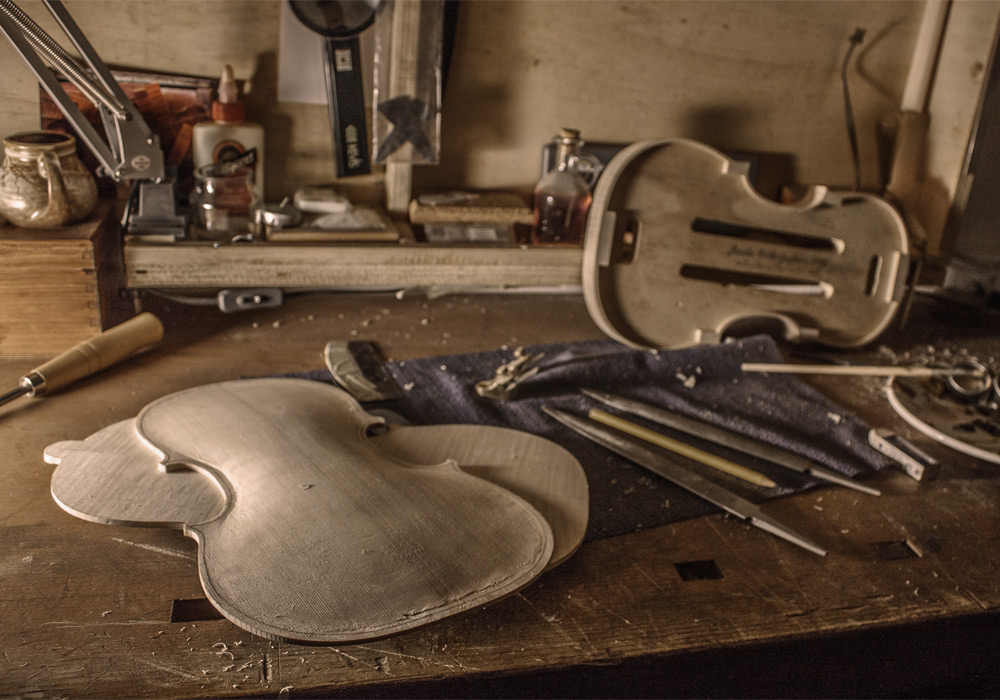In the ever-evolving world of virtual instruments, where authenticity and expressiveness are paramount, SWAM-S takes the center stage. Standing for Synchronous Waves Acoustic Modeling – Strings, SWAM-S represents a pinnacle of innovation and precision in the realm of stringed instruments. This article delves into the world of SWAM-S, exploring its unique approach of pure Physical Modeling, the physics behind bowed strings, and how it offers musicians a level of control and realism that approaches the essence of live performance.
The Essence of SWAM-S: Pure Physical Modeling:
In a departure from its woodwind counterpart, SWAM-W, SWAM-S relies solely on Physical Modeling to create its breathtaking soundscape. There are no pre-recorded samples; instead, sound is generated in real-time through the ingenuity of innovative modeling techniques.
The Art of Precise Modeling: Digital Waveguides Synthesis:
The journey to create SWAM-S involved an in-depth study of Physical Modeling techniques, with a special focus on Digital Waveguides Synthesis, spearheaded by the esteemed Prof. Julius O. Smith. By leveraging this technique, incorporating new elements, and embarking on relentless fine-tuning, SWAM-S emerges as the ultimate virtual instrument for bowed strings—a true testament to modeling excellence.
Real-Time Control: A Symphony of Parameters:
What sets SWAM-S apart is its unwavering commitment to real-time control and expression. Musicians can seamlessly manipulate a plethora of parameters, including bow speed, bow pressure, bow position, vibrato, portamento, harmonics, tremolo, pizzicato, and more, all in a way that mirrors the nuances of a live performance. The line between virtual and reality becomes ever more blurred as SWAM-S allows musicians to shape their sound with unparalleled precision.
The Physics of Bowed Strings: A Journey into Sound:
To truly appreciate the marvel of SWAM-S, it’s essential to understand the intricate physics of bowed strings. The bow is a magical instrument that allows the player to input energy continuously, sustaining a note and influencing its timbre. Unlike plucking, bowing maintains a rich harmonic spectrum, preserving the character of the sound.
The interaction between the bow and the string is a dance of stick and slip—a regular cycle that involves the intriguing properties of friction. This interaction also has a profound impact on the instrument’s timbre, as the standing wave within the string governs the cycle of stick and slip. When this cycle occurs, the string’s motion becomes nearly periodic, resulting in a sound with an almost exact harmonic spectrum. This process reduces inharmonic effects, a phenomenon not seen when the string is plucked.
Helmholtz Motion: The Idealized String Movement:
Within the stick and slip cycles, the string exhibits a behavior known as Helmholtz motion—an idealized movement that contributes to the instrument’s unique timbre and expressiveness.
SWAM-S: Bridging Physics and Artistry:
SWAM-S expertly models this intricate system, drawing from the insights of Prof. Julius O. Smith’s Digital Waveguide Synthesis and integrating a complex friction model. Elements borrowed from the SWAM technology designed for woodwinds instruments further enhance the realism of the timbre and the overall instrument behavior. The result is a virtual instrument that not only captures the essence of bowed strings but also interacts dynamically with the musician’s expressiveness.
In the world of virtual strings, SWAM-S stands as a pinnacle of innovation—a true hybrid between Physical Modeling and artistry. It empowers musicians to craft performances that evoke the essence of live stringed instruments, bridging the gap between the digital and the real. SWAM-S is more than a virtual instrument; it’s a gateway to a world of boundless artistic expression.

